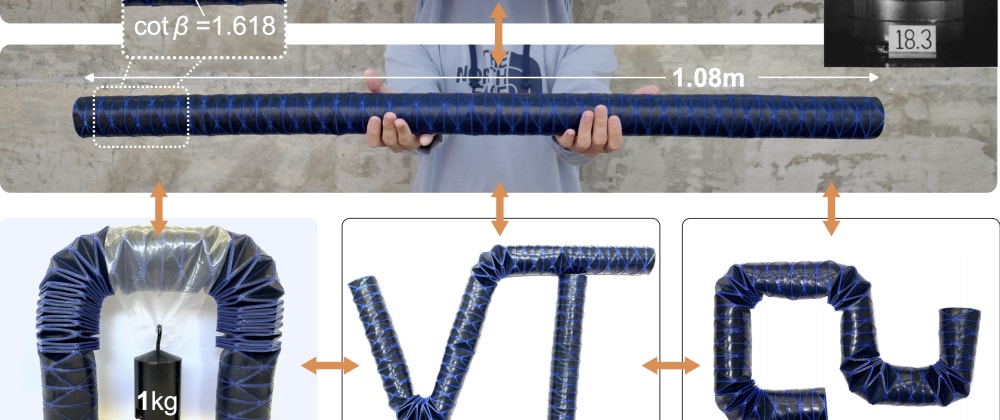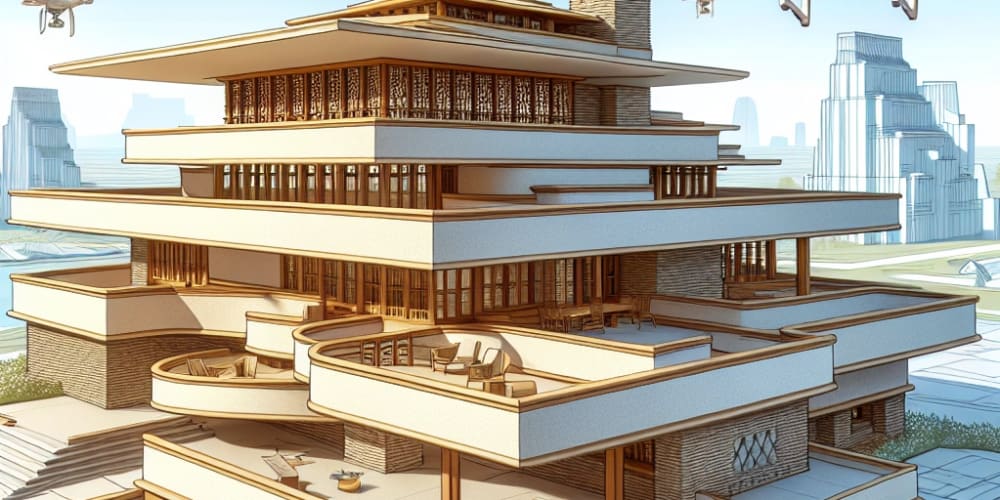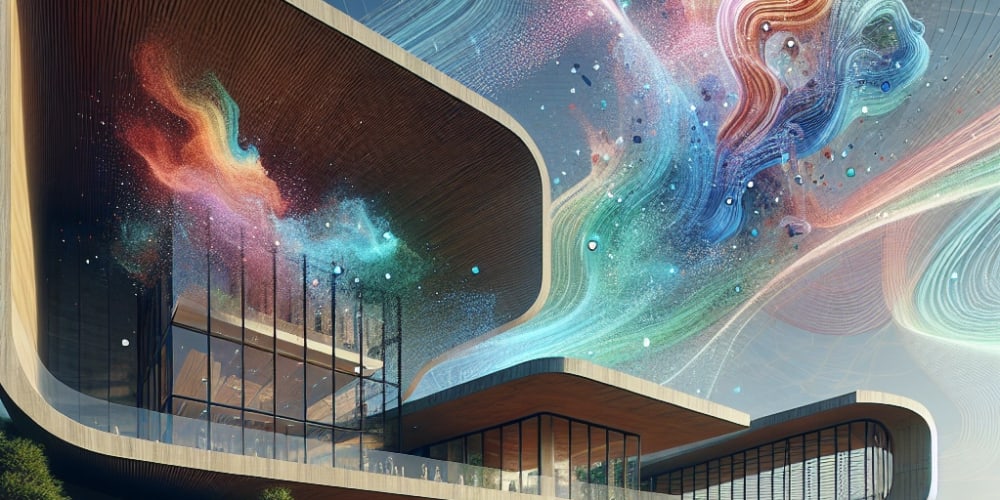This is a Plain English Papers summary of a research paper called Golden Ratio Yoshimura for Meta-Stable and Massively Reconfigurable Deployment. If you like these kinds of analysis, you should subscribe to the AImodels.fyi newsletter or follow me on Twitter.
Overview
- This research paper explores the design and kinematics of the "Golden Ratio Yoshimura", a novel deployable structure inspired by the Yoshimura origami pattern and the golden ratio.
- The key innovations include a meta-stable design that can be reconfigured into various shapes, and a fabrication approach that enables massively reconfigurable deployment.
- The authors demonstrate the potential of this system for applications in space exploration, robotics, and architecture.
Plain English Explanation
The "Golden Ratio Yoshimura" is a new type of deployable structure that can transform into different shapes. It's inspired by the Yoshimura origami pattern, which uses a zigzag design, and the golden ratio, a mathematical proportion found in nature.
The key advantages of this design are:
Meta-Stability: The structure can stay in different configurations without requiring external energy to hold it in place. This makes it easy to reconfigure as needed.
Massive Reconfigurability: The fabrication approach allows for the creation of large-scale, complex structures that can be easily reconfigured. This could be useful for things like deployable space structures, modular robots, or adaptive architecture.
The key idea is to use the golden ratio, a mathematical proportion found in nature, to design a deployable structure that can take on many different shapes. This could have a lot of applications, like in space exploration, robotics, and architecture.
Technical Explanation
The paper presents the design and kinematic analysis of the "Golden Ratio Yoshimura", a novel deployable structure inspired by the Yoshimura origami pattern and the golden ratio. The key innovations include:
Meta-Stable Design: The structure is designed to be meta-stable, meaning it can maintain different configurations without requiring external energy to hold it in place. This allows for easy reconfiguration between different shapes.
Massively Reconfigurable Fabrication: The authors develop a fabrication approach that enables the creation of large-scale, complex structures that can be easily reconfigured. This involves the use of modular components and a "golden ratio" scaling strategy.
The paper provides a detailed kinematic analysis of the Golden Ratio Yoshimura, including its degrees of freedom, stability conditions, and reconfiguration capabilities. The authors demonstrate the potential of this system through a series of physical prototypes and simulations, showcasing its versatility for a range of applications.
Critical Analysis
The paper presents a compelling design for a highly reconfigurable deployable structure, with a strong theoretical foundation and promising experimental results. However, some potential limitations and areas for further research are worth noting:
Scalability Challenges: While the fabrication approach aims to enable massive reconfigurability, the complexity of the system may pose challenges in scaling to truly large-scale deployments. The authors acknowledge the need for further investigation into manufacturing and assembly processes.
Structural Stability: The meta-stable design is a key feature, but the paper does not extensively explore the structural integrity and load-bearing capabilities of the system across different configurations. Investigating the system's behavior under various loading conditions would be valuable.
Energy Requirements: The paper focuses on the reconfiguration capabilities, but does not delve into the energy requirements or actuation mechanisms needed to transition between configurations. Understanding the energy costs and feasibility of automated reconfiguration is an important next step.
Real-World Applications: The paper presents several potential application domains, such as space exploration and architecture. However, more detailed case studies or prototypes demonstrating the system's performance in these specific contexts would strengthen the argument for its practical relevance.
Overall, the "Golden Ratio Yoshimura" represents an innovative and promising approach to deployable structures, with significant potential for further development and exploration.
Conclusion
The "Golden Ratio Yoshimura" introduced in this paper offers a novel design for a highly reconfigurable deployable structure, leveraging the Yoshimura origami pattern and the golden ratio to create a meta-stable system. The authors' work demonstrates the potential of this approach for a range of applications, including space exploration, robotics, and architecture.
While the paper presents a strong theoretical foundation and promising experimental results, further research is needed to address scalability challenges, investigate structural stability, and explore the energy requirements and real-world feasibility of this system. Nonetheless, the "Golden Ratio Yoshimura" represents an exciting and innovative contribution to the field of deployable and reconfigurable structures, with significant implications for the future of adaptable and versatile systems.
If you enjoyed this summary, consider subscribing to the AImodels.fyi newsletter or following me on Twitter for more AI and machine learning content.



















